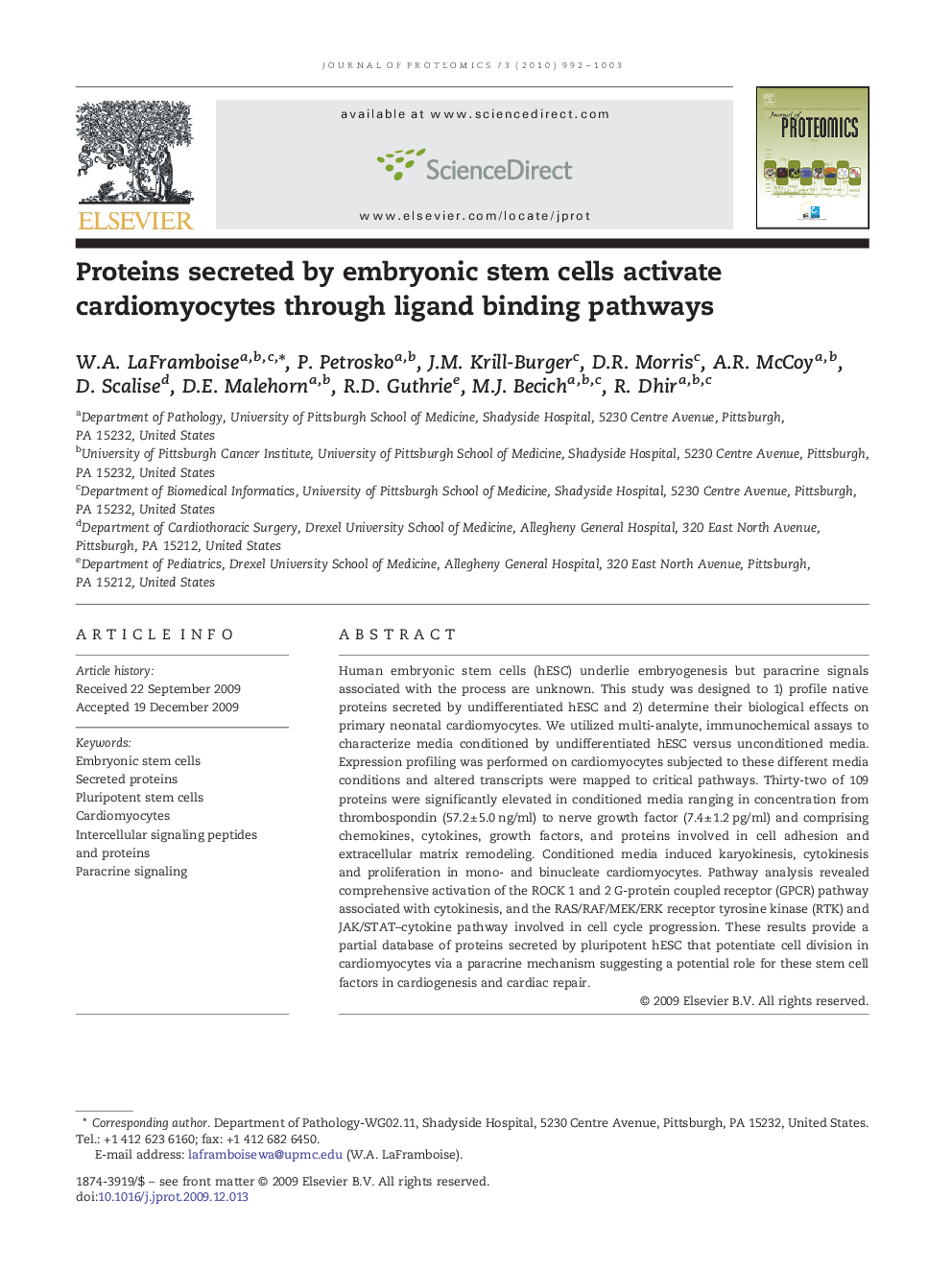| Article ID | Journal | Published Year | Pages | File Type |
|---|---|---|---|---|
| 1226165 | Journal of Proteomics | 2010 | 12 Pages |
Human embryonic stem cells (hESC) underlie embryogenesis but paracrine signals associated with the process are unknown. This study was designed to 1) profile native proteins secreted by undifferentiated hESC and 2) determine their biological effects on primary neonatal cardiomyocytes. We utilized multi-analyte, immunochemical assays to characterize media conditioned by undifferentiated hESC versus unconditioned media. Expression profiling was performed on cardiomyocytes subjected to these different media conditions and altered transcripts were mapped to critical pathways. Thirty-two of 109 proteins were significantly elevated in conditioned media ranging in concentration from thrombospondin (57.2 ± 5.0 ng/ml) to nerve growth factor (7.4 ± 1.2 pg/ml) and comprising chemokines, cytokines, growth factors, and proteins involved in cell adhesion and extracellular matrix remodeling. Conditioned media induced karyokinesis, cytokinesis and proliferation in mono- and binucleate cardiomyocytes. Pathway analysis revealed comprehensive activation of the ROCK 1 and 2 G-protein coupled receptor (GPCR) pathway associated with cytokinesis, and the RAS/RAF/MEK/ERK receptor tyrosine kinase (RTK) and JAK/STAT–cytokine pathway involved in cell cycle progression. These results provide a partial database of proteins secreted by pluripotent hESC that potentiate cell division in cardiomyocytes via a paracrine mechanism suggesting a potential role for these stem cell factors in cardiogenesis and cardiac repair.
Graphical abstractFigure optionsDownload full-size imageDownload high-quality image (306 K)Download as PowerPoint slide
